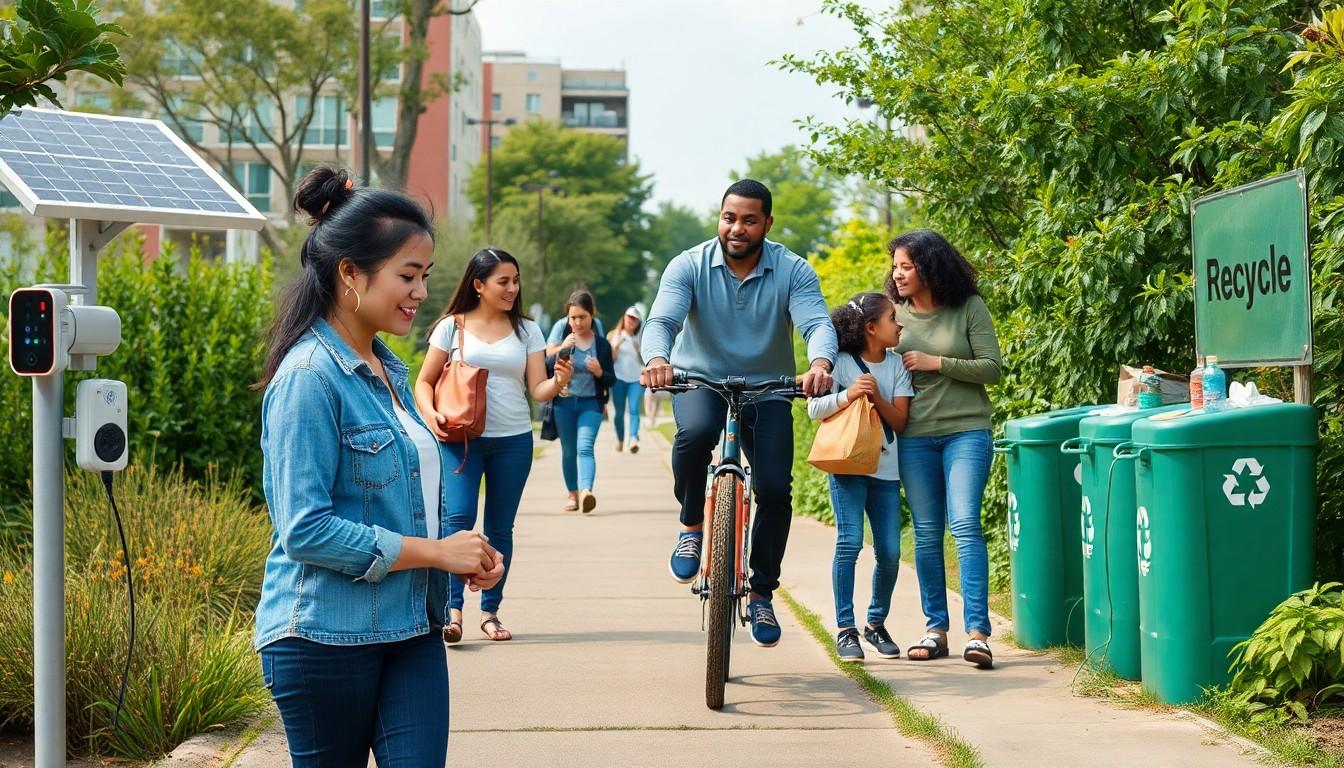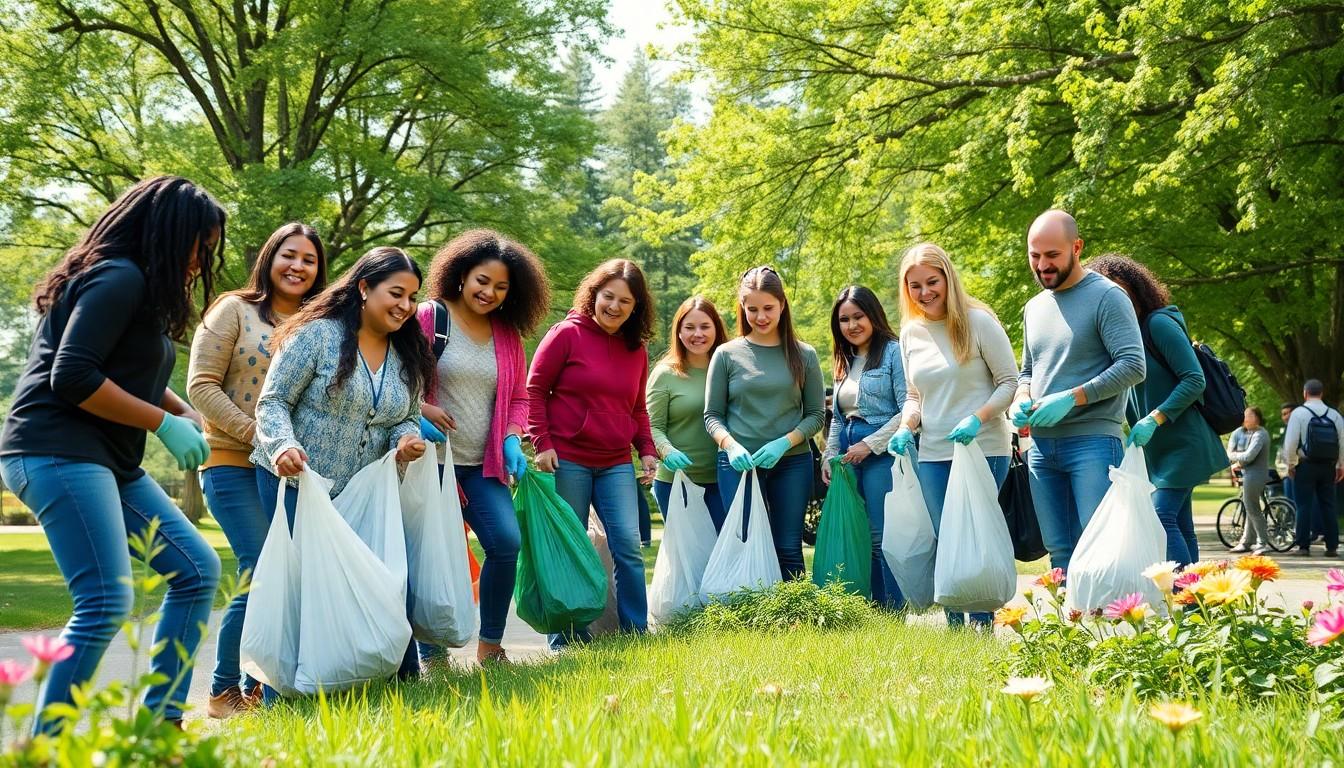Sustainable living isn’t just a trendy buzzword; it’s a lifestyle choice that packs a punch. Imagine reducing your carbon footprint while sipping organic coffee and feeling like a superhero at the same time. It’s not just about saving the planet; it’s about making choices that lead to a happier, healthier life.
The impact of sustainable living stretches far beyond the individual. From cleaner air to thriving ecosystems, every small action contributes to a larger, greener picture. Whether it’s swapping plastic for reusable bags or growing your own veggies, each step taken is a step toward a brighter future. So why not dive into the world of sustainability? It’s good for the planet, great for your conscience, and hey, who doesn’t want to be part of the solution?
What Impact Does Sustainable Living Have?
Sustainable living significantly reduces environmental degradation. Actions like conserving energy and minimizing waste lower carbon footprints. Cleaner air results from decreased greenhouse gas emissions.
Biodiversity thrives in ecosystems supported by sustainable practices. Practices such as planting native species lead to healthier habitats. Wildlife populations increase when habitats remain intact.
Mental health benefits emerge from engaging in sustainable living. Studies indicate that spending time in nature enhances well-being. Community involvement through sustainable initiatives fosters a sense of belonging.
Economic advantages appear alongside environmental benefits. Sustainable businesses often experience increased consumer loyalty. Jobs in renewable energy sectors are growing rapidly.
Social equity improves as sustainable living prioritizes local sourcing. Communities that support local farmers strengthen local economies. Access to fresh, healthy food becomes more equitable.
Overall, sustainable living creates a ripple effect of positive change. It connects personal well-being with environmental health. This interconnectedness encourages individuals and communities to adopt sustainable practices.
Environmental Benefits

Sustainable living significantly enhances environmental quality. It focuses on practices that protect natural resources and reduce pollution.
Reduction of Carbon Footprint
Adopting sustainable practices leads to a noticeable decrease in carbon emissions. Using public transport, cycling, or walking instead of driving lowers greenhouse gas output. Switching to energy-efficient appliances contributes to energy savings while reducing reliance on fossil fuels. Integrating renewable energy sources, like solar panels, decreases dependence on non-renewable energy. Each of these actions cumulatively creates a significant reduction in an individual’s carbon footprint, promoting a healthier atmosphere for everyone.
Conservation of Resources
Sustainable living encourages smarter resource management. Implementing recycling and composting minimizes landfill waste and promotes resource reuse. Choosing locally sourced products lessens transportation energy costs and supports local economies. Reducing water usage through efficient fixtures or rainwater harvesting helps maintain essential freshwater supplies. Practices like these contribute to the long-term availability of vital resources, supporting both the environment and future generations.
Economic Implications
Sustainable living plays a crucial role in shaping economic trends and practices. By adopting eco-friendly choices, individuals and businesses can experience numerous financial benefits.
Cost Savings
Implementing sustainable practices frequently leads to significant cost savings. Reduced energy consumption from energy-efficient appliances results in lower utility bills. Using public transport, cycling, or walking instead of driving diminishes fuel expenses and maintenance costs. Minimizing waste through recycling and composting also cuts disposal costs. Over time, these savings accumulate, supporting household budgets and promoting financial stability.
Job Creation in Green Industries
Green industries are rapidly expanding, driving job creation across various sectors. Renewable energy jobs have surged, with the U.S. solar industry employing over 250,000 workers as of 2023. Energy efficiency roles, particularly in retrofitting buildings, have also seen considerable growth. Local sourcing initiatives encourage the rise of small businesses that prioritize sustainable practices, contributing to community job opportunities. As sustainable living becomes mainstream, the demand for skilled workers in these roles continues to increase, bolstering the economy further.
Social Effects
Sustainable living profoundly affects social dynamics, fostering community well-being and enhancing the overall quality of life. Engaging in eco-friendly practices cultivates strong community bonds and encourages collaboration among individuals.
Community Engagement
Participating in sustainable initiatives encourages community engagement. Local clean-up events bring residents together to collectively address environmental issues. Farmers markets, featuring locally sourced products, create a hub for community interaction, supporting local producers while promoting healthier eating. Workshops on sustainability educate community members and empower them to make informed choices, enhancing awareness and fostering a shared sense of responsibility. Group activities, like tree planting, strengthen relationships among participants, leading to a collaborative spirit that ultimately benefits both people and the environment.
Improvement of Quality of Life
Quality of life improves significantly through sustainable living practices. Communities that prioritize sustainability experience cleaner air and safer environments, promoting better health outcomes for residents. Access to green spaces enhances mental well-being, with parks providing areas for recreation and social gatherings. Incorporating public transport options reduces traffic congestion, offering convenience and accessibility. Sustainable living also encourages healthier lifestyles through organic food options, leading to increased overall wellness. By investing in sustainability, communities create vibrant and resilient environments, supporting both individual happiness and collective prosperity.
Challenges and Barriers
Various challenges hinder the widespread adoption of sustainable living. Addressing these obstacles is essential for promoting sustainable practices.
Misconceptions about Sustainable Living
Many individuals hold misconceptions about sustainable living. They often perceive it as expensive or time-consuming. In reality, small changes, such as reducing single-use plastics, can be cost-effective and simple. Not understanding the overall benefits leads to reluctance in adopting sustainable practices. Some assume that sustainable living requires drastic lifestyle changes, discouraging participation. Increasing awareness around what sustainable living truly entails can help dispel these myths. Education plays a crucial role in clarifying misconceptions and emphasizing that sustainable choices are accessible and beneficial for everyone.
Accessibility and Affordability
Accessibility poses a significant barrier to sustainable living. Urban areas often provide more options for sustainable products and services than rural regions. Many people face challenges finding affordable eco-friendly alternatives. For example, organic foods or sustainable household items can come with a higher price tag, making them less attainable for budget-conscious consumers. Additionally, lack of public transportation in certain areas limits access to low-carbon transportation methods. Initiatives aimed at increasing the availability of sustainable options in underserved communities can bridge this gap. Building partnerships with local businesses may further promote affordable, sustainable choices for diverse populations.
Movement that Shapes Healthier Environments
Sustainable living is more than just a personal choice; it’s a collective movement that shapes healthier environments and communities. By embracing eco-friendly practices, individuals contribute to cleaner air, thriving ecosystems, and enhanced mental well-being. The ripple effects of these actions extend beyond personal benefits, fostering social equity and economic growth.
As awareness grows, so does the potential for positive change. Overcoming misconceptions and barriers is crucial for making sustainable living accessible to all. By prioritizing education and community engagement, everyone can participate in this vital journey toward a more sustainable future. Embracing sustainability not only nurtures the planet but also enriches lives, creating a harmonious balance between personal well-being and environmental health.

